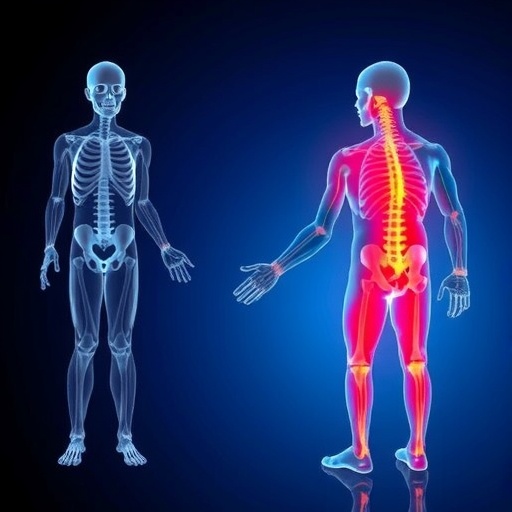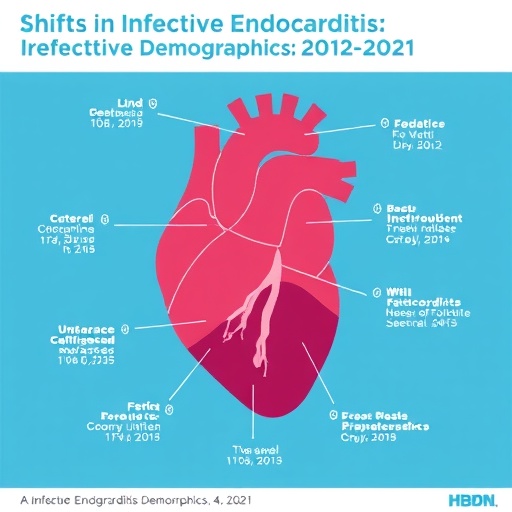New evidence published today in the Cochrane Library shows that human papilloma virus (HPV) vaccines protect against cervical lesions in young women, particularly in those who are vaccinated between the ages of 15 and 26. It also summarizes findings on harms that have been assessed in randomized controlled trials.
Most people who have sexual contact at some point in their life will be exposed to the human papilloma virus (HPV). In the majority of women, HPV infection will be cleared by the immune system. When the immune system does not clear the virus, persistent HPV infection can cause abnormal cervical cells. These lesions are known as cervical 'precancer' because over time they can progress to cervical cancer if left untreated.
There are many different types of HPV. Some are associated with the development of cervical lesions that can become cancerous and are considered as high-risk HPV types. Two of these high-risk types (HPV16 and HPV18) account for about 70% all cases of cervical cancer worldwide. Vaccines have been developed that help the immune system to recognize certain HPV types. Because cervical cancer can take several years to develop, regulatory bodies and international health agencies such as the World Health Organization (WHO) regard cervical lesions as the preferred outcome measure for HPV vaccine trials.
A team of Cochrane researchers has summarized results of 26 studies in 73,428 women conducted across all continents over the last eight years. Most women in the studies were under the age of 26 years old, although three trials recruited women between 25 and 45 years. The studies were well-designed, randomizing the women to either HPV vaccine or a placebo. The review evaluates evidence for two vaccines: the bivalent vaccine targeting HPV16 and 18, and the quadrivalent vaccine targeting HPV16/18 and two low-risk HPV types causing genital warts. The newer vaccine that targets nine HPV types was not included in the review since it has not been compared against a placebo in a randomized controlled trial.
The review looked at two groups of people: women who are free of high-risk HPV at the time of vaccination and all women regardless of HPV status at vaccination. The effects of the vaccine were measured as precancer associated with HPV16/18 and precancer irrespective of HPV type. The review looked at data from ten trials assessing cervical lesion data at between three and a half to eight years after vaccination.
None of the studies have followed up participants for long enough to detect an effect on cervical cancer. The researchers looked at precancer cervical lesions instead. They found that in young women who did not carry HPV, vaccination reduced the risk of developing precancer. About 164 per 10,000 women who got placebo and 2 per 10,000 women who got the vaccine went on to develop cervical precancer.
The researchers also looked at data from all enrolled women regardless whether they were free of high-risk HPV at vaccination or not. Among women aged 15 to 26 years, vaccines reduced the risk of cervical precancer associated with HPV16/18 from 341 to 157 per 10,000. HPV vaccination reduced also the risk for any precancer lesions from 559 to 391 per 10,000.
In older women vaccinated between 25 to 45 years the HPV vaccine does not work as well. This might be because older women are more likely to have been exposed already.
The evidence also shows that the vaccines do not appear to increase the risk of serious side effects which was about 7% in both HPV vaccinated or control groups. The researchers did not find increased risk of miscarriage in women who became pregnant after vaccination. However, they emphasize that more data are required to provide greater certainty about very rare side effects and the effect vaccines have on rates of stillbirth, and babies born with abnormalities in those who became pregnant around the time of vaccination.
Cochrane lead author, Dr. Marc Arbyn, of the unit Cancer Epidemiology, Belgian Cancer Centre, Sciensano, said: "The findings of this review should be viewed within the context of multiple global surveillance studies, which have been conducted by the Global Advisory Committee on Vaccine Safety from the WHO since the vaccinations were licensed. The committee concluded that the risk-benefit profile of prophylactic HPV vaccines remains favourable and expressed its concerns about unjustified claims of harm that lack biological and epidemiological evidence, and which may affect the confidence of the public. At the same time, the Committee encouraged health authorities to continue surveillance and examination for potential adverse events."
Dr. Jo Morrison, Consultant in Gynaecological Oncology at the Musgrove Park Hospital, Somerset, UK, said: "Vaccination aims to prime the immune system to produce antibodies that can block subsequent natural HPV infection. These data show that immunizing against HPV infection protects against cervical precancer, and it is very likely that this will reduce cervical cancer rates in the future. However, it cannot prevent all cervical cancer and it is still important to have regular screening, even if you have been vaccinated."
She added: "Cervical cancer can take many years to develop following HPV infection and development of precancer lesions, therefore long-term follow-up studies are needed to find out the effects of HPV vaccination on cervical cancer rates."
###
Editor's notes:
Full citation: Arbyn M, Xu L, Simoens C, Martin-Hirsch PPL. Prophylactic vaccination against human papillomaviruses to prevent cervical cancer and its precursors. Cochrane Database of Systematic Reviews 2018, Issue 5. Art. No.: CD009069. DOI: 10.1002/14651858.CD009069.pub3.
Breakdown of results by sub-groups of women:
Women who are hrHPV DNA negative (only efficacy data for women aged 16-26y)
HPV vaccines reduce hgCIN associated with HPV16/18 from 164/10,000 to 2/10,000 (high certainty). They reduce also any precancer irrespective of HPV types from 287/10,000 to 106/100,000 (high certainty). HPV vaccination protects also against AIS associated with HPV16/18 (from 9 to 0 per 10,000) and any AIS (from 10 to 0/10,000) – moderate certainty for both AIS outcomes.
Women who are HPV16/18 DNA negative
The effect of HPV vaccines on risk of precancer differ by age group. In younger women, HPV vaccines reduce precancer associated with HPV16/18 from 113 to 6/10,000 (high certainty). HPV vaccines lower any precancer from 231 to 95/10,000 (high certainty). In females older than 25, the vaccines probably reduce precancer associated with HPV16/18 from 45 to 14/10,000 (moderate certainty).
Women unselected by HPV DNA status
In women vaccinated at 15 to 26 years of age, HPV vaccination reduces precancer associated with HPV16/18 from 341 to 157/10,000 (high certainty) and any precancer from 559 to 391/10,000 (high certainty).
In older women vaccinated between 25 to 45 years, the effects of HPV vaccine on precancer are smaller, and this may be due to previous exposure to HPV. The risk of precancer associated with HPV16/18 is probably lowered from 145/10,000 in unvaccinated women to 107/10,000 following HPV vaccination (moderate certainty). The risk of any precancer is probably similar between unvaccinated and vaccinated (341/10,000 compared with 356/10,000, moderate certainty).
For further information, please contact,
Jo Anthony
Head of Knowledge Translation, Cochrane
M +44(0) 7582 726 634 E [email protected] or [email protected]
Dawn Peters Wiley (US)
+1 781-388-8408
[email protected]
Dr. Marc Arbyn:
Epidemiologist
Unit of Cancer Epidemiology, Belgian Cancer Centre
Sciensano
Juliette Wytsmanstreet 14
B-1050 Brussels
Belgium
[email protected]
Dr. Jo Morrison:
Consultant in Gynaecological Oncology
Department of Gynaecological Oncology
Musgrove Park Hospital T
aunton and Somerset NHS Foundation Trust, UK
[email protected]
About Cochrane
Cochrane is a global independent network of researchers, professionals, patients, carers and people interested in health. Cochrane produces reviews which study all of the best available evidence generated through research and make it easier to inform decisions about health. These are called systematic reviews.
Cochrane is a not-for profit organization with collaborators from more than 130 countries working together to produce credible, accessible health information that is free from commercial sponsorship and other conflicts of interest. Our work is recognized as representing an international gold standard for high quality, trusted information.
Find out more at cochrane.org
Follow us on twitter @cochranecollab
If you are a journalist or member of the press and wish to receive news alerts before their online publication or if you wish to arrange an interview with an author, please contact the Cochrane press office: [email protected]
About Wiley
Wiley, a global research and learning company, helps people and organizations develop the skills and knowledge they need to succeed. Our online scientific, technical, medical, and scholarly journals, combined with our digital learning, assessment and certification solutions help universities, learned societies, businesses, governments and individuals increase the academic and professional impact of their work. For more than 210 years, we have delivered consistent performance to our stakeholders. The company's website can be accessed at http://www.wiley.com.
Media Contact
Dawn Peters
[email protected]
781-388-8408
http://newsroom.wiley.com/
http://dx.doi.org/10.1002/14651858.CD009069.pub3




